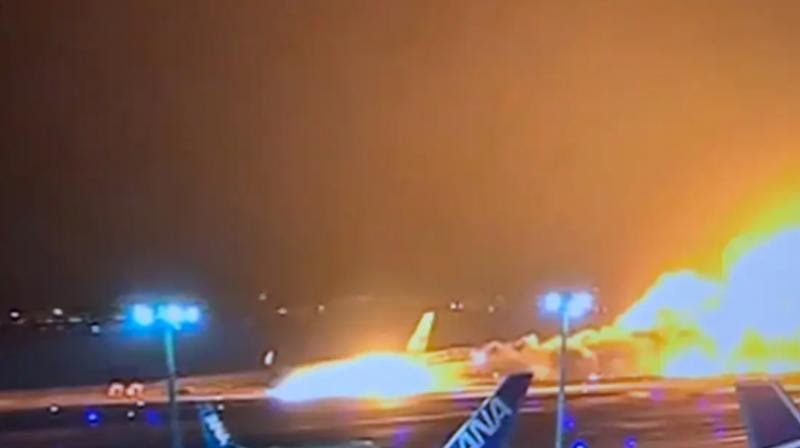Impact and Response: Plane Crash Today

Plane crashes have devastating consequences, not only for those directly involved but also for the surrounding communities and the aviation industry as a whole. The immediate impact is often a mixture of shock, grief, and a scramble to understand what happened.
Emergency Response Efforts
Emergency response efforts are crucial in the aftermath of a plane crash. The primary goal is to save lives and minimize further injuries. Rescue operations involve a coordinated effort between various agencies, including:
- Firefighters: They are responsible for extinguishing any fires and providing immediate medical assistance to survivors.
- Police: They secure the crash site, control access, and investigate the cause of the accident.
- Medical personnel: They provide emergency medical care to the injured, including transporting them to hospitals.
- Search and rescue teams: They search for any missing passengers or crew members.
The effectiveness of the emergency response depends on factors such as the location of the crash, the severity of the impact, and the availability of resources.
Public Reaction and Media Coverage
Plane crashes are often highly publicized events, attracting significant media attention. Public reaction is typically a mix of shock, sadness, and concern for the victims and their families. The media plays a crucial role in informing the public about the incident, but it also faces challenges in reporting sensitive information responsibly.
“The media’s role in covering plane crashes is complex and multifaceted. It must balance the need to inform the public with the need to respect the privacy of those involved.” –
The coverage often includes interviews with experts, analysis of the incident, and speculation about the cause of the crash. The public’s reaction to media coverage can be influenced by factors such as the severity of the incident, the identity of the victims, and the perceived safety of air travel.
Aviation Safety and Prevention

Aviation safety is paramount in the air travel industry, ensuring the well-being of passengers and crew. To achieve this, comprehensive safety protocols and regulations are implemented, encompassing various aspects of air travel.
Common Causes of Plane Crashes
Plane crashes can result from a combination of factors, including human error, mechanical failures, and adverse weather conditions.
- Pilot Error: Human error is a significant contributor to aviation accidents. It can involve misjudgments, inadequate training, fatigue, or distractions. Examples include improper aircraft handling, failure to follow procedures, and miscommunication.
- Mechanical Failure: Mechanical malfunctions can lead to catastrophic events. These can include engine failure, structural integrity issues, or failures in critical systems like hydraulics or flight control systems.
- Weather Conditions: Adverse weather can pose significant risks to aircraft operations. Factors like thunderstorms, strong winds, icing conditions, and low visibility can disrupt flight paths and cause accidents.
Safety Protocols and Regulations, Plane crash today
To mitigate the risks associated with these factors, aviation authorities worldwide implement stringent safety protocols and regulations. These include:
- Pilot Licensing and Training: Pilots undergo rigorous training and licensing processes to ensure proficiency and adherence to safety standards. These programs emphasize flight skills, aircraft systems knowledge, and emergency procedures.
- Aircraft Maintenance and Inspections: Regular maintenance and inspections are crucial to prevent mechanical failures. Aviation authorities mandate strict maintenance schedules and inspections to ensure aircraft are airworthy.
- Weather Monitoring and Reporting: Weather information is critical for safe flight operations. Aviation authorities and airlines rely on advanced weather forecasting and reporting systems to assess potential hazards and plan flight routes accordingly.
- Flight Data Recorders and Cockpit Voice Recorders: These devices record critical information about the flight, including aircraft performance and crew communication. These recordings are vital for accident investigations and safety analysis.
Advancements in Aviation Technology
Continuous advancements in aviation technology play a significant role in enhancing safety and mitigating risks. Some notable examples include:
- Flight Management Systems (FMS): FMS systems automate complex flight operations, reducing pilot workload and improving precision. They provide guidance on flight paths, altitude, and speed, enhancing safety and efficiency.
- Ground Proximity Warning Systems (GPWS): GPWS systems alert pilots to potential ground collisions, providing timely warnings and guidance to avoid accidents.
- Traffic Collision Avoidance Systems (TCAS): TCAS systems detect and warn pilots of potential collisions with other aircraft, enabling them to take evasive action.
- Enhanced Vision Systems (EVS): EVS systems use cameras and sensors to provide pilots with a clear view of the surroundings, even in low visibility conditions, improving situational awareness and reducing risks.
Man, that plane crash today was a real bummer. But hey, at least we can catch the abc presidential debate time and see what these candidates are all about. Maybe they can offer some solutions for stuff like air safety.
Gotta keep those thoughts of the plane crash in the back of my mind though, you know?
Man, that plane crash today was a total bummer. Seriously, it’s a reminder that life is unpredictable, just like the political landscape in Minnesota. Governor Tim Walz is definitely keeping things interesting, but let’s hope he’s got a plan to deal with the fallout from this crash.
It’s gonna take some serious leadership to get things back on track.
